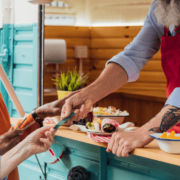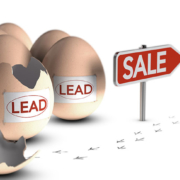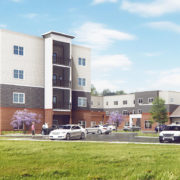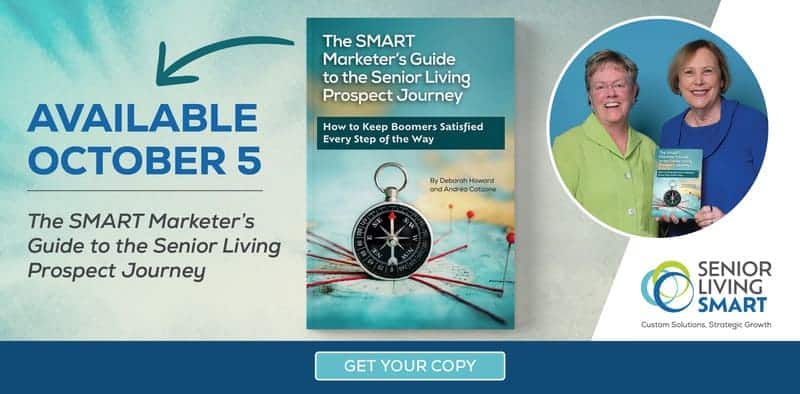Senior Living Marketing Event Ideas to Try
Originally published on 7/26/2021 and updated on 3/18/2025
Need some fresh senior living marketing event ideas for prospects, families, and professional referrals? Here are some to consider.
Senior Living Marketing Event Ideas to Boost General Awareness about Your Community
With these events, the goal is to create awareness about your community with the people who live in the surrounding area. These events cast a wider net—in fact, some of the events might skew younger—but the idea is everyone knows (or is connected to) someone who fits your ideal buyer persona.
In other words, that twenty-five-year-old might have a grandparent in the area, or that forty-year-old might have a mother who’s been thinking of making the move to senior living.
Host a blood drive.
The American Red Cross has a turnkey system for hosting a blood drive. You provide the space, the volunteers, and the donors. The Red Cross takes care of everything else.
- Who to invite: General population in the area, current leads, residents/families. The nice thing about this event idea is that you gain a lot of traction in one fell swoop.
- How to promote the event: Promote it to your lead database via email, promote it to residents and families, and promote it to people in the area through local advertising (such as Patch.com and the local paper—you can often submit event listings for free).
- How to market your community at the event: After people donate blood, send them off with a goody bag with collateral about your community and a fun branded promotional item. Have sales reps on hand in case people have questions about the community. And make sure the reps are prepared to conduct impromptu tours if someone is interested.
Host “Food Truck Friday.”
Reach out to local food truck vendors in the area and designate a “Food Truck Friday” event. The trucks come from, say, 4-8 and park in your lot for residents/families and people from the larger community to enjoy.
- Who to invite/how to promote the event: Same as above.
- How to market your community at the event: You bring dessert! Set up a candy booth with your company’s signage. (Like the candy tables that are popular at weddings.) People can fill a bag of candy (for free). The bag will be branded with your community info and include collateral. Again, have sales staff available in case someone attending the event has questions about your community.
Senior Living Marketing Event Ideas to Woo Hot Prospects
When it comes to creating marketing events to court prospects who’ve already expressed sincere interest in your community, you need to think strategically. These events will be “smaller” in terms of scale—and if any particular event proves successful, be prepared to start running it on a more regular basis.
Spaghetti Supper to Go
One of the most popular questions that prospects ask sales counselors is this: “How’s the food?” Show off your chef’s mad skills by offering spaghetti dinners to go—complete with garlic bread and cannolis. Serious prospects can finally taste food that they’d see on your menu if they lived in your community.
- How it works: Prospects can reserve their order and drop by to pick it up between five and seven on the appointed day. With each order, make sure someone greets the prospect, helps them carry the dinner to their car, and offers a swag bag with some extras, like fun branded promo items. The next day, the sales rep can follow up and ask what the prospect thought of the meal.
- Who to invite: Limit the initial send to hot sales-qualified leads (SQLs). And if this is your first time doing an event like this, limit the total number. Discuss with your chef about a reasonable number of spaghetti suppers they can prepare for one evening and start with that number as the upper limit. (So if the number is 10, send the offer to 10 prospects. There’s little chance that all 10 would say yes, but if by some chance they did, the chef could still accommodate all of them.)
- How to promote it: Use a combo of email marketing and good old-fashioned phone calls.
- Bonus tip: The sales rep should follow up the next day with the prospect and ask what they thought of the food and to see if they’re any closer to making a decision. Plus, once you get in a rhythm, this can be an easy ongoing event—one you do every month for hot SQLs you’re trying to close.
Backstage Pass
You’re trying to sell how great your community is as a place to live, right? So give some of your hot prospects backstage passes to try out certain amenities.
For example, do you have a fabulous fitness center with lots of fun classes? Give the prospect a free pass to try it out for a week. Got an amazing restaurant on site? Give prospects a pass to enjoy a meal on the house. You get the idea. The goal is to give the prospect the opportunity to experience the community without a sales person hovering.
- How it works: Determine ahead of time 3-4 amenities that you’ll allow free passes to (and any rules/conditions). Create a nicely designed oversized “backstage pass”—something that reflects your community’s branding. Give it to the prospect and explain how it works. Even if they don’t use the pass, the offer itself will likely have a powerful—and memorable—effect.
- Caveat: Make sure relevant team members are aware of the backstage pass. So, for example, if the pass is for the fitness center, everyone who works in the fitness center should A) be aware of this promotion and B) be alerted when someone is given a pass to the fitness center. This way, the fitness center employees can greet/help the prospect accordingly.
- Who to invite/how to promote it: Determine on a case-by-case basis. If the hot prospect seems really interested in your community, this might be the offer to help seal the deal. Or if the prospect is wavering between your community and another one, this offer might help them decide.
- Bonus tip: The sales rep should follow up with the prospect after the person has “used” the backstage pass. Again, inquire about the person’s experience and see if they’re any closer to a decision.
Senior Living Marketing Event Ideas for Thanking Referral Sources
Coffee and Donuts On Us
Don’t underestimate the value of your existing referral sources. It’s always good to thank them and remind them you’re there. Invite them to a quarterly “drive through breakfast” at your community. The goal is to reconnect with those you know and to show your gratitude for their referrals.
- How it works: Buy boxes of coffee and donuts/bagels ahead of time. (It’s always good to order them ahead.) Have a team managing a booth at your entrance with all the goodies between, say, 6 and 9. Invite your referral sources to stop by and pick up breakfast—on you. Offer a little swag bag with a gift card to Starbucks and some collateral that they can use to promote your community (like a stack of postcards or brochures).
- Who to invite: Referral sources—active ones and ones who’ve gone quiet.
- How to promote the event: Create an ongoing email list of your referral sources and do a three-prong email blast. Send the first a week out. Send the second a few days before. Send the final one either the night before or early AM on the day of. The gist is simple: Go for a “thank you for your referrals. Enjoy donuts and coffee on us” message.
- Bonus tips: Record who shows up! Get names. Then, follow up with the person individually via email saying you hoped they enjoyed the coffee/donuts, and you’d love to have them over to the community for lunch sometime. Again, you’re trying to stay top of mind in these folks’ heads while also giving them reasons to promote your community (by experiencing the great food, seeing the gorgeous grounds, and so forth).
After-hours Networking
Hosting an after-hours networking event is always a great way to mingle with referral sources—and possibly meet new ones! In terms of how to set it up . . . you can be in charge of doing everything—securing the location, food, etc. Or if your community is a member of the local Chamber of Commerce, they often have sponsorship opportunities for after-hours networking events.
- How it works: Host a cocktail hour at your community or a nearby restaurant. Invite referral sources and prospective referral sources for an evening of cocktails and networking. Make sure everyone leaves with a swag bag (filled with a promo item, something special like a gift card, and collateral about your community that they can hand out on your behalf).
- Who to invite: Your current referral sources and a list of referral sources you’d like to get.
- How to promote it: Follow the same steps as above for your current referral sources. For your prospective referral sources, create a separate email list. You’ll use similar messaging—”Join us for a night of networking. Sponsored by Awesome Senior Living Community.”
- Bonus tips: Have several team members at the event and make sure they mingle. They should pass out business cards and get cards from whoever is there. Then, the next day, they should send a personal email to each person they met (new referral sources and existing ones) and ask to set up a one-to-one coffee chat to foster the relationship further.
Senior Living Marketing Event Ideas: Don’t Underestimate the Value of Virtual Events
Virtual events can be incredibly effective—and can sometimes even work better for certain personalities (like introverts) or for people who want to explore your community from afar.
So, it’s smart to offer a combo of in-person events and virtual events—and to monitor the results.
Check out these helpful articles for more info:
- 5 Tips for Going Virtual
- Expand Beyond Zoom: Bigger, Better Ways to Use Video
- How to Keep Prospects Engaged Virtually
- How Senior Living Sales Teams Can Create Virtual Experiences
Remember, the Key to a Successful Event is Starting with a SMART strategy.
Be strategic in your planning—from the purpose of the event, to how you’ll market it, to how you’ll follow up. Need help along the way? Reach out. We love helping our clients develop and execute effective senior living marketing events.













